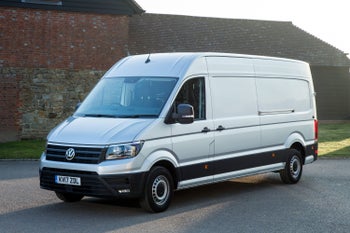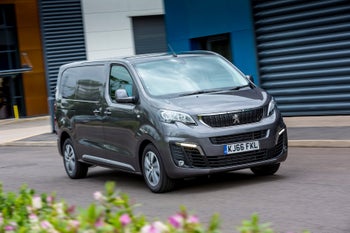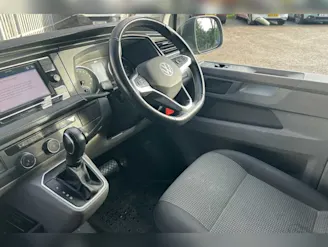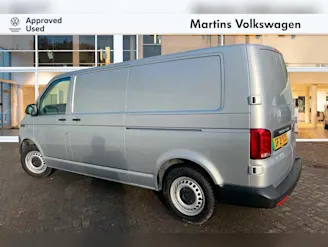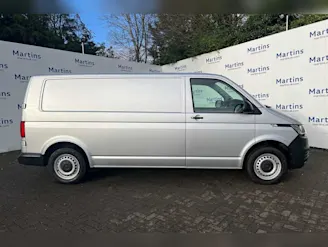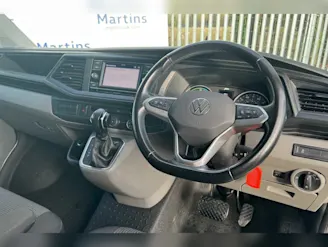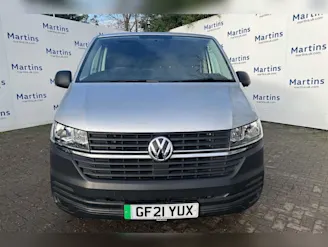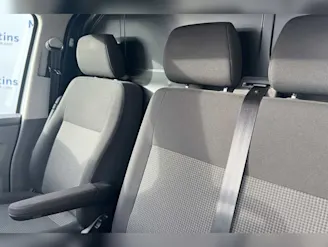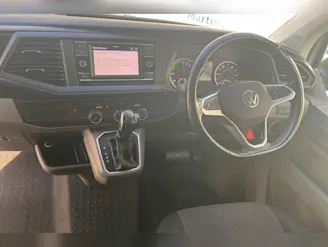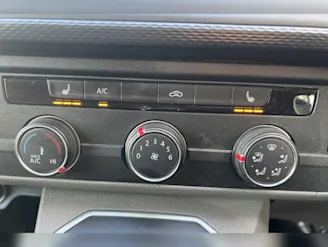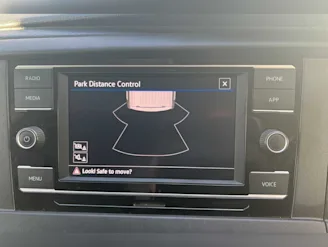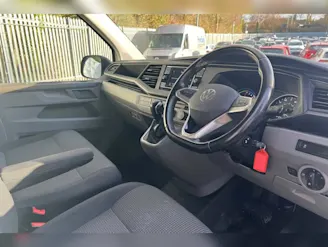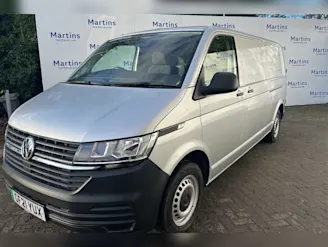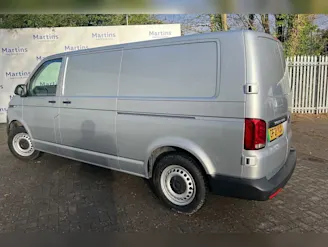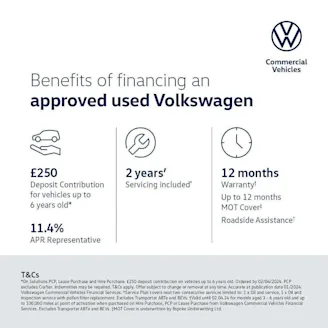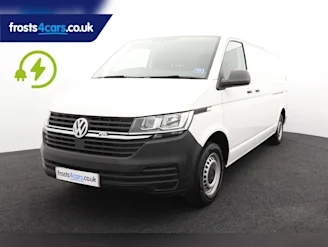- Guides
- Best electric van
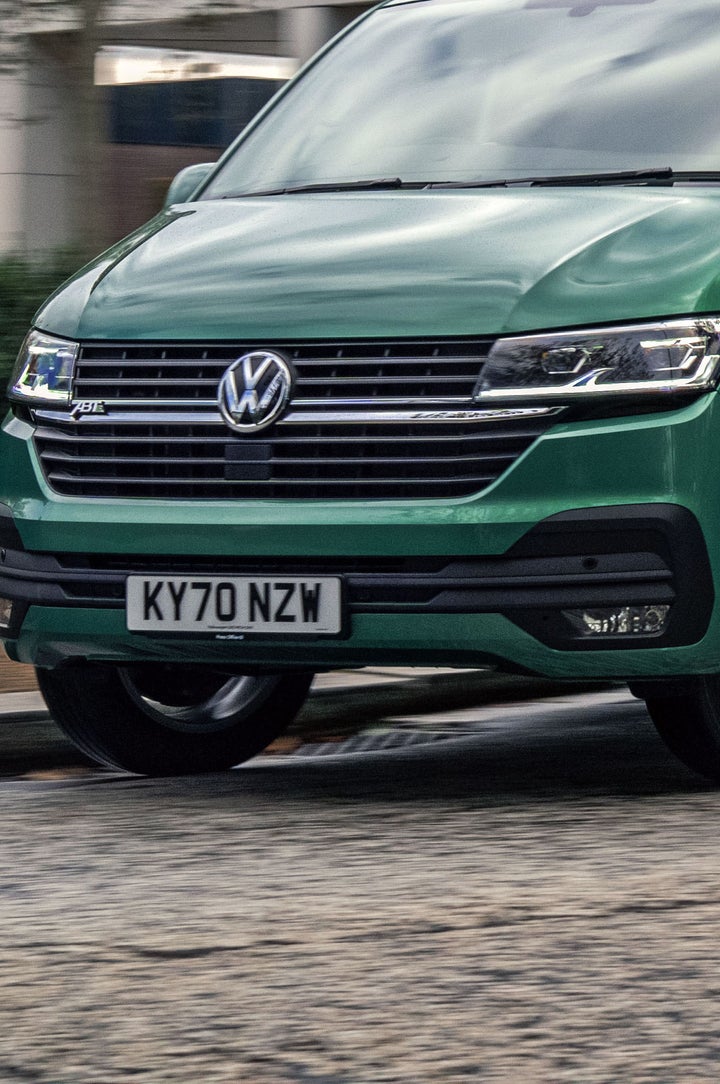
Find an electric van
Best electric van 2023
- What are the best electric vans?
- We test and rate the contenders
- Find an electric van for sale
Looking to find the best electric van? You've come to the right place. We've tested all those on sale to find out which is the best electric van you can buy.
In the not-too-distant future, electric vans could be the only way to transport goods in cities like London, Birmingham and Manchester. Think of the driver dropping off all those Amazon deliveries. They don’t need to cover hundreds of miles – all they need to do is take the parcel the last few miles from distribution hub to doorstep.
Of course, a van needs plenty of torque to move its goods – something that recent advances in battery technology can now provide to an electric van without sacrificing range.
Despite a high initial price, an electric van can save you a lot of money on running costs and tax, as well as in clean air zones, like the ULEZ in London. Here, we've ranked the best electric vans you can buy today.
If you're ready to buy we've got over 2,000 Used Vans for Sale, including an wide range of Used Electric Vans for Sale.
Best electric vans 2023
- Mercedes-Benz eVito
- Nissan e-NV200
- Citroen Dispatch
- Renault Kangoo Z.E.
- Ford Transit Custom PHEV
- Peugeot Partner Electric
- Vauxhall Vivaro-e
- LEVC VN5
- Fiat E-Ducato
- Volkswagen ABT eTransporter
Mercedes-Benz eVito
Year launched: 2020
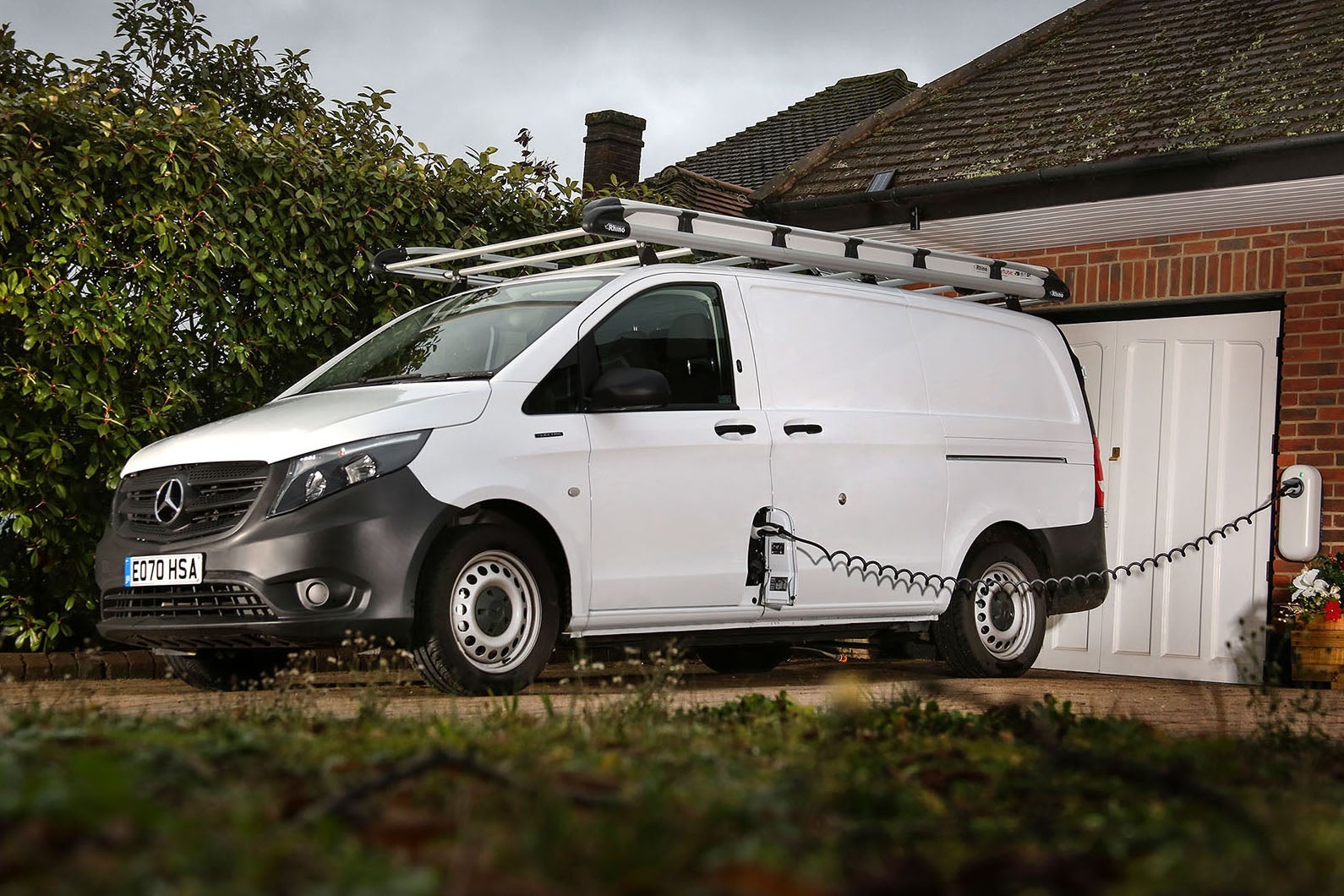

Designed for delivery drivers and city-based van operators, the Mercedes eVito covers 93 miles on a single charge and can carry payloads weighing up to 1073kg. The medium-size e-van is ideal for city based couriers who do short distances - especially when you consider the expensive DPF problems that cause headaches for diesel drivers.
The all-electric van takes six hours to fully charge and the electric battery pack is stored under the loadspace floor so it doesn't impact load capacity. However, unlike some electric cars, you can’t hook the van up to a rapid charging point to boost the battery to 80 per cent in 40 or 50 minutes. With 300Nm of torque available, the eVito easily whistles its way onto fast moving roads, however, the van struggles for performance once you pass 50mph.
The Mercedes eVito is available in two load lengths - long and extra long - and cargo volumes range from 6.0 to 6.6 cubic metres. Payloads are similar for both versions, with the long models carrying 1043kg and the extra long van taking 1073kg. All get twin side sliding doors as standard and gross vehicle weights (GVW) peak at 3.2 tonnes.
Nissan e-NV200
Year launched: 2014
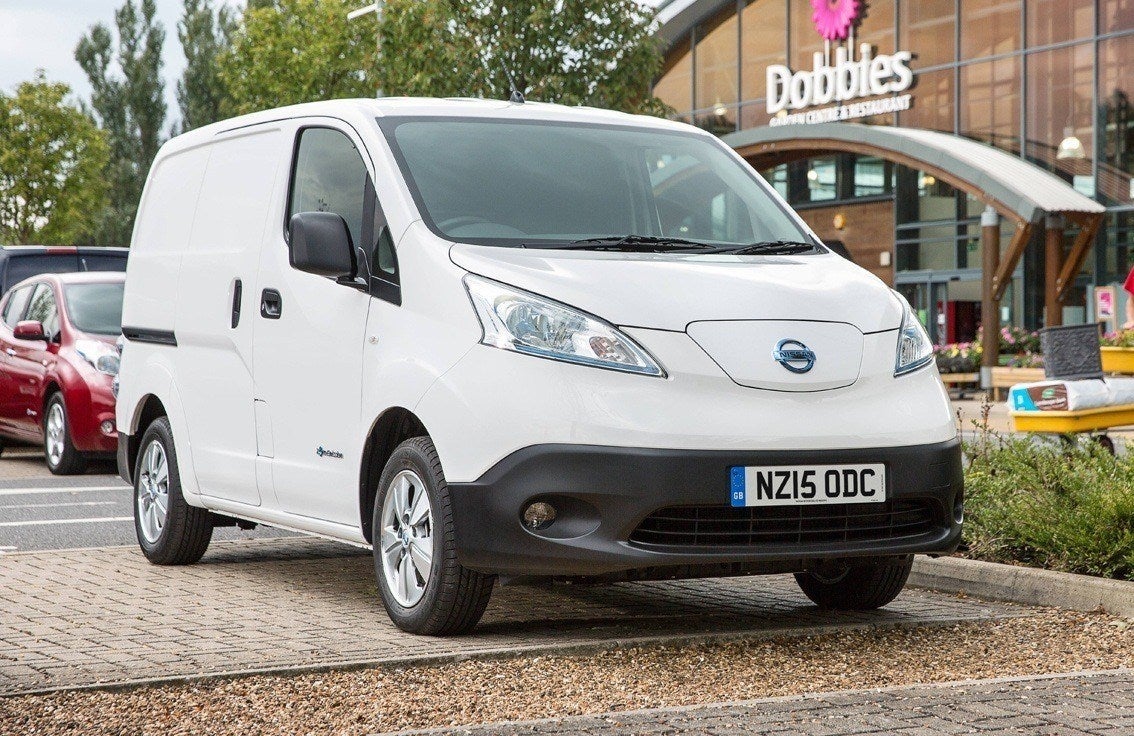

Nissan gave use the first mass-market EV with the Leaf so it makes sense it should offer a zero emissions van. In fact, the e-NV200 is based on the Leaf so you know the technology is tried, tested and reliable – critical for a working vehicle.
A mid-sized van, the e-NV200 has a 40kWh battery with an official range of 124 miles. Of course, that’s subject to change if it’s fully loaded with 770kg (there’s a 4.2-cubic-metre load volume and a 2.4-metre long load bay).
Charging times are similar to the Leaf with the van capable of being fully charged from a standard socket overnight or topped up to 80% full from a rapid charger in 30 minutes.
Citroen e-Dispatch
Year launched: 2020
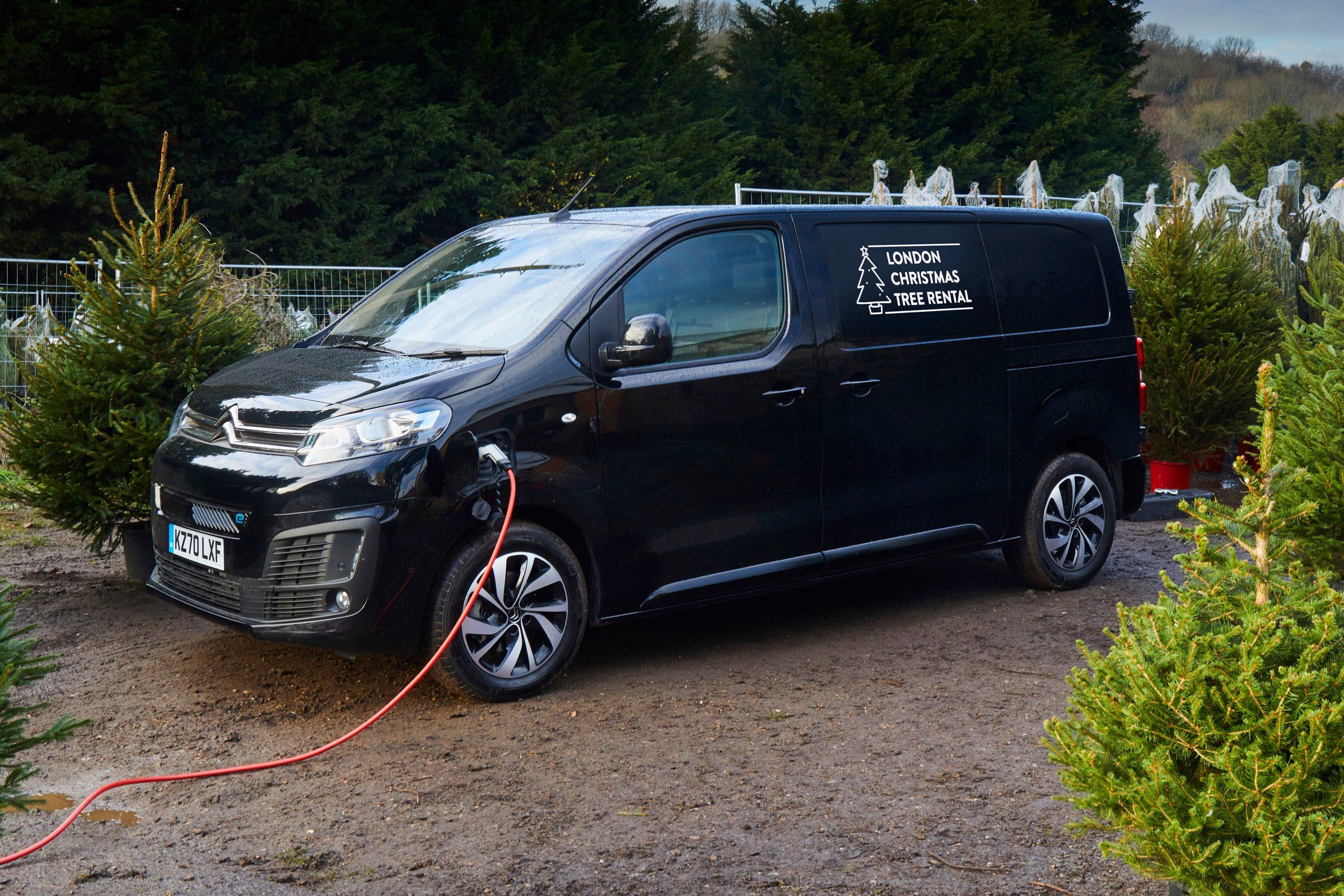

Citroen, Peugeot and Vauxhall have been sharing a van platform for a while – so it makes sense that they’ll all have an electric version with just a few subtle tweaks between each model. So alongside the Citroen e-Dispatch there is the Peugeot e-Expert and Vauxhall Vivaro-e (see further down).
Drivers can choose between a 50kWh battery for a 143-mile range, or 75kWh for a 205-mile range. The e-Dispatch comes comes in three different body lengths and because of its zero tailpipe emissions status you can enter the London ULEZ without having to pay.
The e-Dispatch offers a payload of more than 1200kg and up to 6.6m3 of load capacity plus there's a useable load length of up to 4 metres when fitted with the optional moduwork system.
Renault Kangoo Z.E.
Year launched: 2017


The Renault Kangoo Z.E is an all-electric, small van that offers real-world practicality with a 143-mile official range. It comes in two lengths: standard or Maxi - and can also be specified as a two-seater panel van or as a crew cab, with five seats.
Despite the official range, Renault has taken the unusual step of publishing real world economy figures, which show a driver can expect the Kangoo ZE to cover 75 miles in the winter months and 124 miles in the summer on a single charge. The quick-charging system can complete a full charge in six hours with the right charging point. A less potent 3.7kW home Wallbox charger needs 12 hours, and if you’ve only got access to a three-pin plug, the larger 33kWh battery pack will take up to 17 hours. 22 miles can be added in just a single hour, which is handy for topping up the range when parked up during a lunch break.
The biggest Kangoo panel van will provide 4.6 cubic metres of space, with a load length of 2.1 metres. However, owing to the additional weight of the battery pack, the payload of the Kangoo Z.E - in both standard and Maxi versions - is limited to 640kg. The Z.E is good to drive and effortless to park, meaning it’s well-suited for urban use. But it’s not particularly at home on fast flowing roads.
Ford Transit Custom PHEV
Year launched: 2020
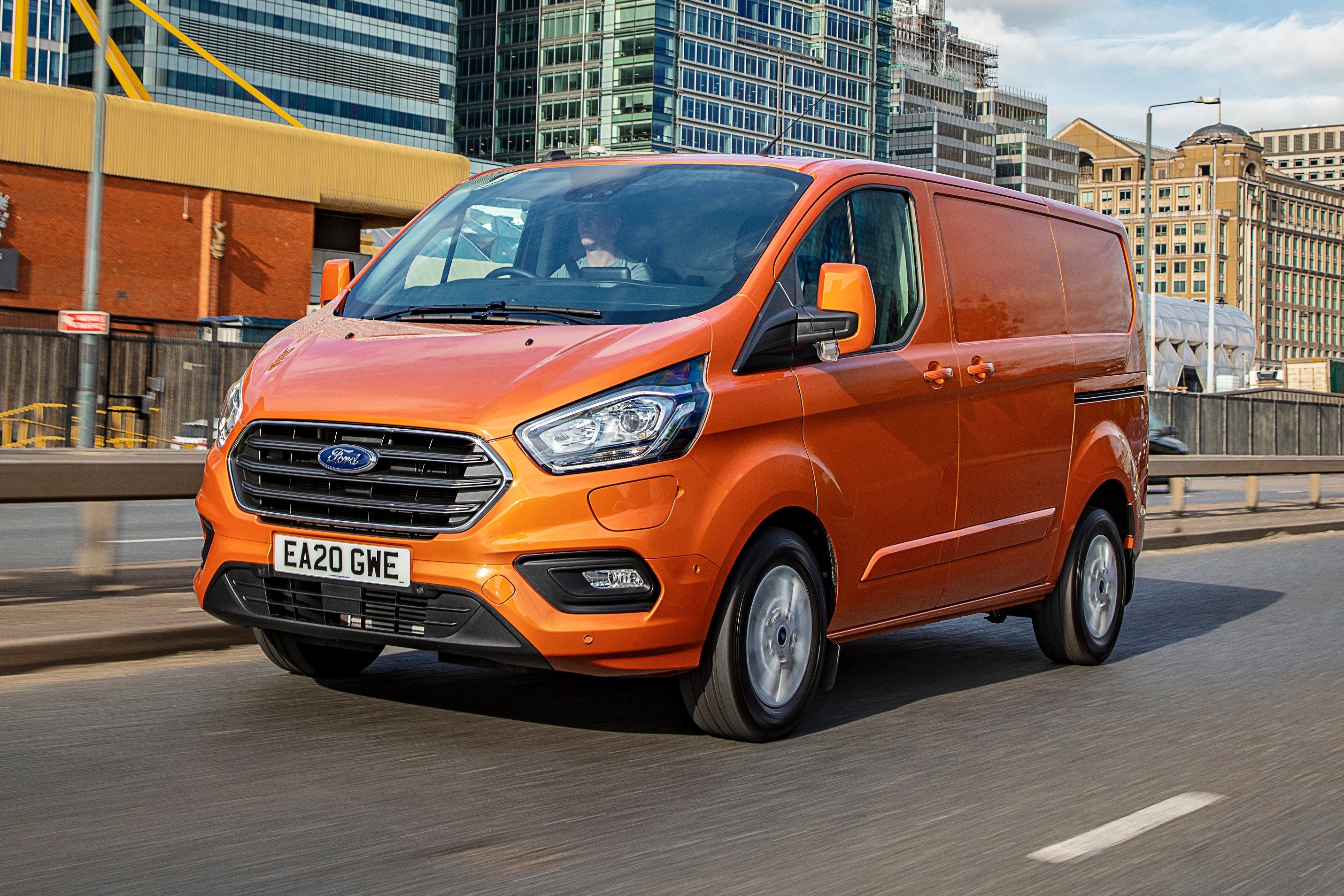

If you’re a small business that doesn’t have the luxury of running a fleet of vans, then you’ll need something that offers you the flexibility to do longer runs as well as city centre drops. Step forward the Ford Transit Custom PHEV.
The Transit Custom Plug-in Hybrid combines a 1.0-litre petrol engine with an electric motor and a battery located under the floor. It can cover up to 35 miles under electric power alone, while still being able to complete longer journeys if required. Critics might argue that this engine isn’t up to the job, but they’d be wrong as the engine gets a helping hand for the battery as and when required. It's biggest obstacle is its price. Starting at slightly more than £39,000 plus VAT, it's considerably pricier than the equivalent diesel.
With the batteries positioned underneath the floor, the PHEV is just as practical as a standard Transit Custom. That means there's a useful 6.0 cubic metres of load space in the back and a payload of 1130kg. Battery charging can be completed using a standard three-pin socket in around four and a half hours, while a 16-amp Type 2 charger will give it a full charge in just over two and a half hours.
It's how the Plug-In Hybrid drives that makes it stand out from the diesel. When fully-charged, it'll set off in silence. There's plenty of torque, too, meaning that you can easily keep up with city traffic, even with a load in the back.
Peugeot Partner Electric
Year launched: 2013


Electric versions of the hugely popular Citroen Berlingo and Peugeot Partner Electric were among the early entries into the world of zero emissions vans. And while they can still cut it, they’re definitely looking a bit out of date compared to new rivals.
Still, with an official range of 106 miles and costing around £23k, this French load-lugger could is still a good fit for many drivers – but don’t buy until you’ve read our review.
That’s because these vans are based on the previous generation models – not only are they not as good the latest models but you also don’t get a lot of kit. You need to make sure the battery is right for you, too, because while it’s small it doesn’t take long to charge – but there’s no fast charging option.
Vauxhall Vivaro-e
Year launched: 2020


The Vauxhall Vivaro-e is one of a trio - its equivalents are the Citroen e-Dispatch and Peugeot e-Expert with Vauxhall now part of the big PSA Group.
Vauxhall Vivaro-e buyers can choose the full-length panel van or a double-cab version with two rows of seats. The e-van claims a payload of up to 1226kg, with owners able to specify a short or long wheelbase model. Vauxhall also says the Vivaro-e has a maximum towing capacity of 1000kg.
The 50kWh battery has a range of up to 143 miles, while the optional 75kWh battery claims a range of up to 205 miles. Charging from empty to 80% takes 30 minutes from a 100kW rapid-charger, with the 75kWh pack taking 45 minutes. A 74kW on-board charger is fitted as standard, but a three-phase 11kW unit can be equipped for faster charging times.
The Vivaro-e is equipped as standard with the same array of driver aids and interior kit as the regular Vivaro - so all versions get a head-up display, lane-keeping assistance, traffic sign recognition, automatic emergency braking and a 7-inch infotainment touchscreen.
LEVC VN5
Year launched: 2020
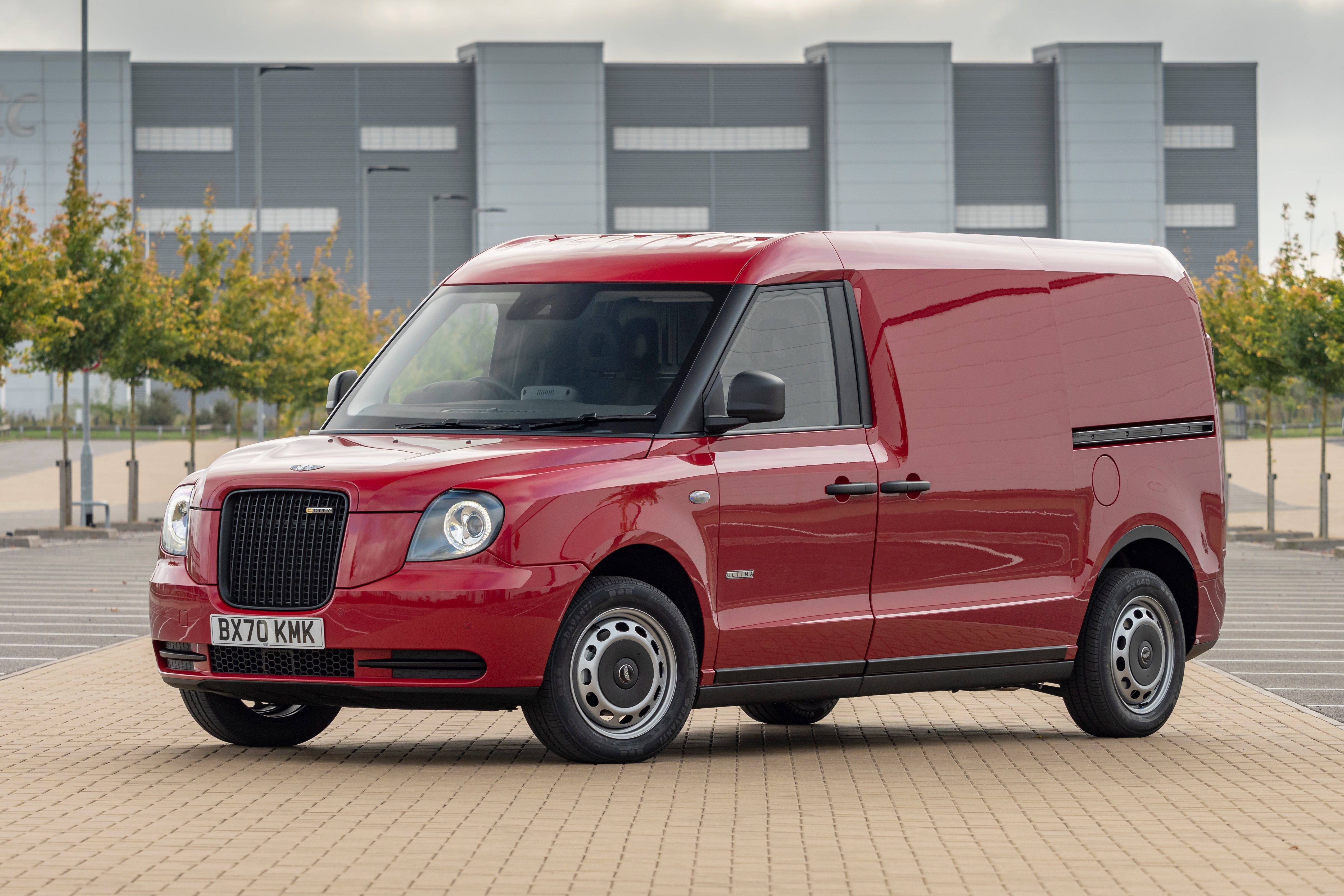

Here’s a slightly different take on the electric van. It’s made by LEVC and is based on their taxi. Unlike a hybrid van, this is a range extender. That means there’s no connection between the wheels and the 1.5-litre three-cylinder – the engine simply acts as a generator to keep the battery topped up.
And the 31kWh battery in VN5 has an all-electric range of 58 miles. Or 300 if you need to use the range extender. It won’t suit everyone, but it’s handy if you can do a lot of stop-start low mileage work but need to throw in the occasional long run.
It’s not a bad little worker, either, with a payload of 830kg and a cargo volume of 5 cubic metres making it ideal for city life.
Fiat E-Ducato
Year launched: 2020
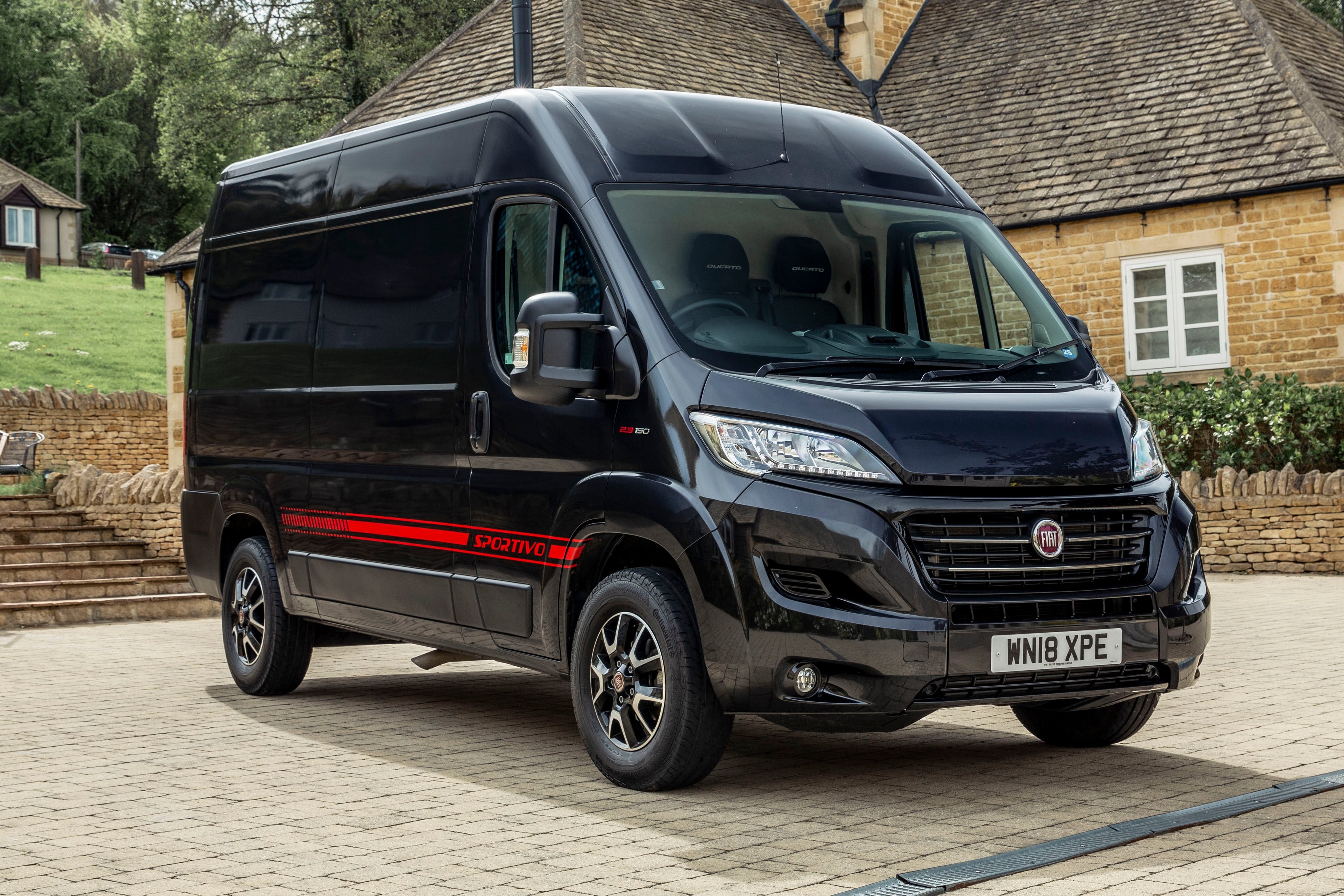

The Fiat Ducato is an Italian institution. It has been keeping Italy moving for the best part of 35 years. Until now, anyone in the market for an electric version was forced to buy an aftermarket but Fiat has finally sorted out a factory version.
Available from 2021, the E-Ducato promises to offer all the current available sizes. That means there’s plenty of choice when it comes to payloads with the biggest being 1.9 tonnes.
Would be buyers can choose from two batteries variants. There’s a 47kWh that offers a range of 137 miles or a 79kWh that can go as far as 224 miles on a charge. Prices, however, are yet to be confirmed.
Volkswagen ABT eTransporter
Year launched: 2020


Volkswagen is no stranger to EVs so an electric version of the hugely popular Transporter is a no brainer. Developed in collaboration with long-standing Premium Partner ABT e-Line (hence the odd name). It uses the electric drive system from the Volkswagen e-Golf - that means there’s a 37kWh battery mounted under the load floor that offers 82 miles.
True that may not seem a lot, but at least you have charging options that include high-speed CCS (0-80% in 45 minutes) while a 7.2kW wallbox can do the job in five and a half hours.
Despite being an EV, the the floor height and all internal dimensions of the eTransporter remain exactly the same as the petrol and diesel versions, so the same racking systems will fit.
Electric van FAQs

Written by
Lawrence Allan
You can now buy a wide range of electric and hybrid vans in the UK. The Mercedes eVito and eSprinter are two of the most popular, along with the new Ford E-Transit. If you're looking for a smaller electric van, we'd recommend the Peugeot e-Partner or Citroen e-Berlingo.
Electric vans make a lot of sense for those who cover a lot of miles around town, particularly delivery drivers with regular stops. Not only are electric vans better for the environment than a diesel van, they're better suited to these kinds of journeys and will save you money in both fuel and maintenance costs.
The electric van with the longest range in the UK is currently the Renault Zoe Van. The car-based electric van has a range of 239 miles while its 50kW rapid charging capability can charge it up to 80% in less than a hour.
The Renault Zoe Van is quite small, though, so if you want to carry a bulky load you might want to look for an alternative like the Citroen e-Dispatch, Fiat eScudo, Peugeot e-Expert, Toyota Proace Electric or Vauxhall Vivaro-e – all of which are essentially the same van, with the same 75kWh battery providing a range of up to 205 miles.
If you're looking for an electric van with a long range, it might be worth waiting for the new Volkswagen ID Buzz Cargo. It's not yet on sale in the UK and its range is yet to be confirmed but, with the same 77kWh battery as the Volkswagen ID.3 electric car, it's likely to be able to travel 250 miles between charges.
Generally, electric vans are very good to drive. Not only are they extremely refined (there's no engine noise, obviously), but you also get instant acceleration. That means they feel eager off the line and are particularly suited to town driving.
They're easy to drive, too. You don't have any gears to change, but otherwise the controls are the same as you'd get in a traditional petrol or diesel van. If you've never driven an electric vehicle before, an electric van needn't be overwhelming.
heycar recommends
Popular pickups and vans for sale
- Citroen Berlingo for sale
- Ford Ranger for sale
- Ford Transit Connect for sale
- Ford Transit Custom for sale
- Ford Transit for sale
- Mercedes X-Class for sale
- Mercedes Vito for sale
- Mercedes Sprinter for sale
- Mitsubishi L200 for sale
- Nissan Navara for sale
- Peugeot Partner for sale
- Peugeot Expert for sale
- Renault Trafic for sale
- Toyota Hilux for sale
- Vauxhall Combo for sale
- Vauxhall Vivaro for sale
- VW Amarok for sale
- VW Caddy for sale
- VW California for sale
- VW Caravelle for sale
